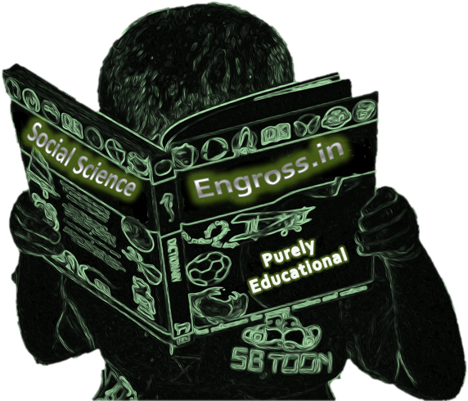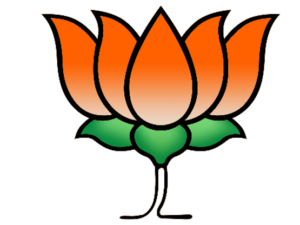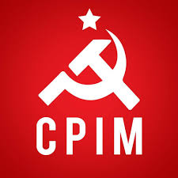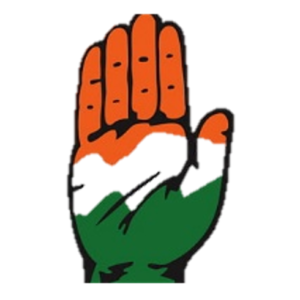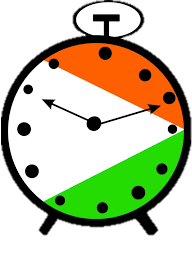Political Parties
Meaning, Structure, Functions and Necessity
Single Party, Bi Party and Multi Party Systems
State Parties and National Parties
Challenges to Political Parties
Steps taken and suggestions to reform Parties
What are Political Parties?
A group of people that contests elections to form and run the Government. There can be divergent views on what is good for the society. So, we have many political parties. They try to convince the people, why their policies are better than others.
The Structure
- The political parties are structured like a pyramid.
- At the top there are leaders who take major decisions for the party.
- At the second level, there are party workers/active membes who devote their time and energy to the party
- At the lowest level, there are party followers.
- Every party has partisans. A partisan is a person who supports his party in every context and in all times. He is unable to take unbiased position.
Functions of Political Parties
Contest Eletions
Two ways of giving tickets
1. Party leaders choosing the candidats as in India
2. Party workers electing the candidates as in USA
Putforth Policies and Programmes
- There can be hundreds of opinions on hundreds of issues
- Parties group similar ones and reduce many such opinions into a few and take basic position. Policies are formed thus.
- The Govt. is expected to run in accordance with the party ideology
Play a decisive role in making laws
- Ruling party makes new laws.
- It succeeds in making laws almost always
- The party MLAs/MPs are directed to vote for the bill
- The hidden challenge: Voice of dissent is not respected
Form and Run the Government
- The leader of the ruling party is appointed as the Prime Minister
- He appoints a few MPs of his party as ministers.
- New ministers are given training
- This political executive takes major decisions
- Thus, the govt. is run with the help of permanent executive
Role of the Opposition
- They criticise th eruling pary for the wrong steps taken
- They mobilise opposition to the ruling party and support for themselves
Shape Public Opinion
- Parties have lakhs of active members.
- Some Pressure groups are extended arms of political parties
- Parties use this network to propagate their stand on issues
- Social media is also used
- Parties at times launch movements
- Public opinion crystalises on the stand taken by one or the other party
Provide link b/w Govt. and Citizens
- Parties help people access government machinary and welfare schemes
- It is easier to get work done by a politician than a government officer
The necessity of Political Parties
1. Elections without political parties
- Every Candidate will be independent
- They can’t make any big promises
- Govt. may be formed but its utility will remain uncertain
- No one would be ready to take up larger responsibility
- They are answerable to the people of their constituency.
- Political parties are required to make bigger promises and to take up bigger responsibilities.
2. Elections where Parties don’t contest
- Parties don’t contest elections to village Panchyat
- Once elections are announced, The villlage society is divided into a few factions
- Each of thes factions nomnates a panel of members to contest from differeent ward
- Apparently, election takes place between independent candidates, but in reality, it takes place between social groups.
- Political parties do the same. In other words, parties are required to represent social divisions
3. Need of a complex society
- As representative democracy emerged, Political Parties also emerged parallelly.
- Parties are required to act as agencies to gather multitude of opinion of various issues.
- Parties are required to act as a platform for the elected representatives to come togetherParties are required to run the government efficiently
- Parties are required to restrain the government from taking wrong steps
- Thus, Political Parties are necessary conditions in Democracy
Questions on the topics – Structure, Functions and Necessity of Political Parties.
- Political Parties are the most visible institutions; at the same time, they are the most criticised ones. Support the statement with suitable arguments.
- What are political parties? How are they structured?
OR
What is meant by Political Parties? Describe the three components of political parties.
- Describe any five major functions of Political Parties.
OR
Political Parties play a major role in in democracy. Explain any five points to justify the statement.
OR
“Political Parties are rightly called the government in disguise”. Justify the statement in reference to democratic politics by giving five arguments.
- How do political parties help in shaping public opinion?
- Describe any two functions of ruling party and two functions of opposition parties.
- Political Parties are necessary a condition in democracy. Analyse the statement with examples.
OR
Describe the importance of political parties in a democratic government.
OR
Modern democracies cannot exist without political parties. Examine the statement.
OR
Explain how the raise the political parties is directly linked to the emergence of representative democracy.
- How do political parties put forth policies and programmes?
- Examine the role of political parties in shaping public opinion.
- Elections are possible without political parties and government may even be formed but its utility will remain ever uncertain. Examine the statement.
Party Systems
Single/Mono Party System
- Only one party or parties affiliated to that party contest elections as in China.
- It is not democratic as people have not choice
Two/Bi- Party System
- Many parties contest elections
- Power shifts between two major parties only
- Smaller parties may win a few seats but not enough to form government on their own
- USA and England are examples
Multi-Party System
- More than two parties have the chance to win elections
- Many parties may form alliance to contest elections
- Alliance may be formed even after elections
- When such an alliance forms the government, then it is called Coalition Government
- India is an example of this party system
Factors that decide Party System in a country
- A country, a Govt. or a Political Party can’t decide the party system.
- It evolves over time.
The factors are as follows
- Nature of the society
- It’s diversity – religious, linguistic etc
- Historical experience
- Context in which the Democracy is established
- Type of elections
Questions on the topic – Party Systems
1. Why has India adopted Multi-Party system?
2. How has Multi-Party system strengthened Democracy in India?
Ans:
- Elections are about representing various ideologies
- Multi-Party system has enabled the representation of various goals, interest, aspirations and needs of the diverse population
- Many Regional/State parties can enjoy power at the national level
- It has created a condition of checks and balances between different political parties
3. Describe any three features of Two-Party System.
OR
Examine the advantages and disadvantages of Two Party system.
4. Distinguish between Single Party system and Bi-Party system.
5. Distinguish between Two Party system and Multi-Party system.
6. “No party system is ideal for all countries and all situations.” Justify the statement with arguments.
7. What is a multi-party system? Explain merits and demerits of multi-party system.
State Parties and National Parties
There are more than 2000 Political Parties registered with the Election Commission of India. Just a handful of them are serious about contesting elections and forming the government. The Election Commission has recognised some of them as State/Regional Parties, and seven of them as National Parties. A Political Party should meet the following criteria to get such recognition.
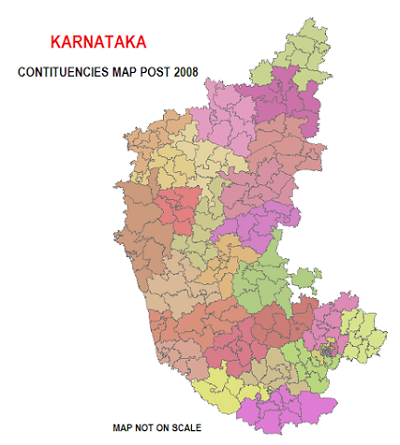
State/Regional Parties
Must win at least 2 MLA seats
Must secure at least 6% votes in the Legislative Assembly Elections
Other Features
- Most of these have regional/state level presence
- The policies are for the development of the region/state
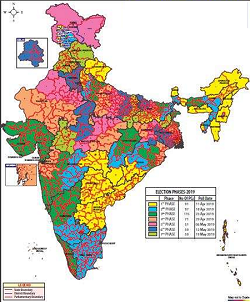
National Parties
Must win at least 4 MP seats
Must secure at least 6% votes in the Loka Sabha Eletions
OR
Must secure 6% votes in 4 Legislative Assembly Elections in different states
Other Features
- Have national presence
- State units follow the policies and strategies designed at the national level
- Most policies are for the entire nation
Advantages of Recognised Political Parties
- Symbol is given permanently
- Only the official candidate of the party can use the symbol
- Can get land/building from the Govt.
- Can take the service of more “Star” campaigners
- Get the voters’ list free of cost
The Seven National Parties of India
Questions on the topic – State Parties and National Parties
1. What is meant by a ‘national political party’? State the conditions required to be a national political party.
2. What is the requirement laid down by the Election Commission for a political party to be recognized as a ’State Party’?
OR
What is meant by regional political party? State the conditions required to be recognized as a ‘regional political party’.
3. Name any two regional parties of West Bengal.
4. What is a political party ? State any two points of the ideology of Bharatiya Janta Party?
5. Describe about the ideology and organization of Bahujan Samaj Party.
6. “Nearly every one of the state parties wants to get an opportunity to be a part of one or the other national level coalition.” Support the statement with arguments.
7. Name any six ‘regional political parties’ of the four southern states of India’
8. Name the ‘regional political parties’ that are predominant in Jharkhand, Maharashtra and Odisha
respectively with their symbols.
9. Name the national political party which espouses secularism and welfare of weaker sections and minorities. Mention any four features of that party.
10. Name the national political party which gets inspiration from India’s ancient culture and values. Mention four features of that party.
Challenges to Political Parties
Questions on the topic – Challenges to Political Parties.
1.
Steps taken to reform Parties
Questions on the topic – Steps taken to reform Political Parties/Suggestions given to reform them
1.
